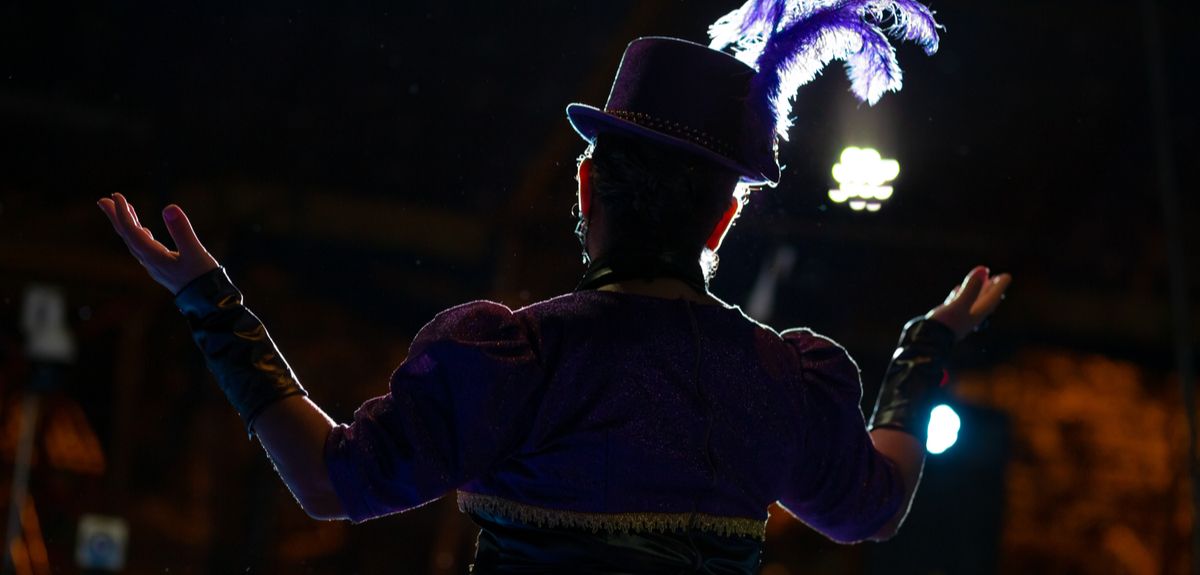
Creative industries' innovative capacity can help lead us out of the pandemic.
COVID-19 represents an unprecedented blow to cultural life; social distancing just is not compatible with full-scale live performance. Theatres, concert halls, festivals, galleries and museums have been silent. And despite a welcome government rescue package, an upcoming generation of actors, artists, comedians, dancers, designers, singers and writers often had to seek alternative forms of employment.
In the early days of the pandemic, during the first lockdown, the actress Fiona Shaw spoke of ‘culture as everything, a way of travelling, even at home’. She was speaking to mark the launch of the Boundless Creativity project, which has provided real-time intelligence and comprehensive data on the impact of the coronavirus across the UK’s arts, cultural and creative sectors.
Yet, leading figures from public and private organisations, large and small, up and down the country, say that culture has fought back and kept us going. Life in lockdown proved distinctly unsettling, like living in a science fiction movie not knowing the ending.
Life in lockdown proved distinctly unsettling, like living in a science fiction movie not knowing the ending....But it has been to culture people turned...Despite their closed doors, organisations adapted and innovated...just when we needed them most
But it has been to culture that people turned, to process what was happening and to express their emotional responses. Despite their closed doors, organisations adapted and innovated, whether to educate and entertain or to comfort and console, just when we needed them most.
Their ability to do so derived in part from the fact we have at our disposal more advanced technology than ever before. The digital world was already moving very fast before the crisis, forcing us to look at the economy of tomorrow, into which citizens will have to move. If no one knows exactly what the ‘new normal’, after Covid will look like, the UK’s cultural and creative industries are providing some tantalising glimpses, especially in the realm of augmented and mixed reality.
In the words of the Classicist, Professor Mary Beard, ‘We will look back to these dark and cloudy times as the moment when we really did harness technology to open up the best of what arts and culture have to offer on a wider and grander scale.’
The evidence we have gathered shows a marked increase in digital cultural consumption during lockdown, despite problems of unequal broadband access and digital literacy. And public research spending choices should reflect the innovative capacity of creative industries.
If no one knows what the ‘new normal’, after Covid will look like, the UK’s cultural and creative industries are providing tantalising glimpses...And public research spending choices should reflect the innovative capacity of creative industries
Twice as many under-45s have engaged in cultural activities online, compared with the over-45s. And digital technologies have turned consumers into producers via platforms such as Instagram and YouTube. But, across the entire age range, casual and marginal users have been converted into more intensive users of technology in search of satisfying digital cultural experiences.
Watching filmed performances, looking at art online, attending Zoom readings of plays, or adopting a pop star’s avatar in a video game; there has been a striking diversification of what is on offer.
Two-thirds of Britons now think it is possible to have a meaningful cultural experience online. Not all forms of cultural product have translated, however. Digital is not a substitute for live performance.
Artists have sometimes chafed at its constraints. Content needs to be adapted, or entirely rethought, for digital platforms, and online experiences work best when they have intimacy and authenticity. Yet, many of those to whom we spoke expect virtual reality and reality itself to evolve alongside each other, with performance to live audiences integrated with streaming to global ones. This hybrid future is likely to be a distinctive marker of the UK’s remarkably adaptable cultural sector.
The extraordinary demand we have witnessed in the past year for cultural products, services and experiences points to the potential for post-Covid recovery to be powered by the creative industries.
The extraordinary demand we have witnessed in the past year for cultural products, services and experiences points to the potential for post-Covid recovery to be powered by the creative industries.
Biomedical science is tackling the primary physical effects of the virus, the arts, cultural and creative sectors can help tackle its secondary social and economic effects.
The key recommendation of our report, is that in the forthcoming autumn spending review an equivalent effort be made in the domain of R&D for creative technology as is made for other digital spheres. Where creative meets ‘tech’ is the place where great cultural and material value will be derived in the next 20 years.
There is a compelling and consequential research agenda in exploring how to reach new global audiences digitally, how to broaden digital access for producers and consumers, how to overcome entry barriers to the digital market faced by freelancers and smaller creative organisations, and how to bring the benefits of cultural access and participation where they are most needed, including for those struggling with the pandemic’s effects on mental health.
Lives, as well as livelihoods, would be transformed by a major new cross-sectoral and collaborative drive for ‘science for creativity’: university researchers in the arts and humanities joining forces with the latest digital and data science, in partnership with a powerhouse of the UK’s economy.
Biomedical science is tackling the primary physical effects of the virus, the arts, cultural and creative sectors can help tackle its secondary social and economic effects
There is precedent for this, with UK Research and Innovation’s Creative Clusters and Audience of the Future programmes transforming university interactions with their cultural hinterlands and the bringing cutting-edge immersive technology into museums, theatre, animation and gaming. These programmes provide a springboard for something even more ambitious.
The pandemic has brought into sharp focus the true value of one of the UK’s crown jewels, its creative industries. If tough spending choices on R&D are around the corner, we would do well to keep that in mind.
Andrew Thompson is chair of global and imperial history at the University of Oxford and co-chair, with Oriel College Provost, Lord Neil Mendoza, of Boundless Creativity.
Boundless Creativity is sponsored by the Arts and Humanities Research Council and the Department for Culture, Media and Sport.
 By
By  Africa’s change-makers: meet the Mastercard Foundation Scholars with big ambitions for the future
Africa’s change-makers: meet the Mastercard Foundation Scholars with big ambitions for the future A green fuels breakthrough: bio-engineering bacteria to become ‘hydrogen nanoreactors’
A green fuels breakthrough: bio-engineering bacteria to become ‘hydrogen nanoreactors’ Oxford's student voices at COP29
Oxford's student voices at COP29 Teaching the World’s Future Leaders
Teaching the World’s Future Leaders  A blueprint for sustainability: Building new circular battery economies to power the future
A blueprint for sustainability: Building new circular battery economies to power the future Oxford citizen science project helps improve detection of antibiotic resistance
Oxford citizen science project helps improve detection of antibiotic resistance The Oxford students at the forefront of the fight against microbial resistance
The Oxford students at the forefront of the fight against microbial resistance  The hidden cost of AI: In conversation with Professor Mark Graham
The hidden cost of AI: In conversation with Professor Mark Graham  Astrophoria Foundation Year: Dr Jo Begbie reflects on the programme’s first year
Astrophoria Foundation Year: Dr Jo Begbie reflects on the programme’s first year